There are games made by development teams numbering in the hundreds, with multi-million dollar budgets, and cutting edge graphics. These gam...

For your Wargamer, Toy soldier collector, MiniFig collector, military history nut. Reviews, interviews, Model Making, AARs and books!
Shadow Empire
Last year saw the release of Field of Glory Empires from AGEOD and Slitherine. It represented a new chapter for AGEOD, best known for their...
For your Wargamer, Toy soldier collector, MiniFig collector, military history nut. Reviews, interviews, Model Making, AARs and books!
Field of Glory: Empires - Persia 550-330 BCE
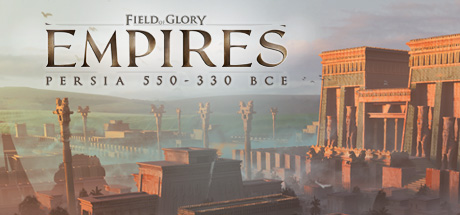
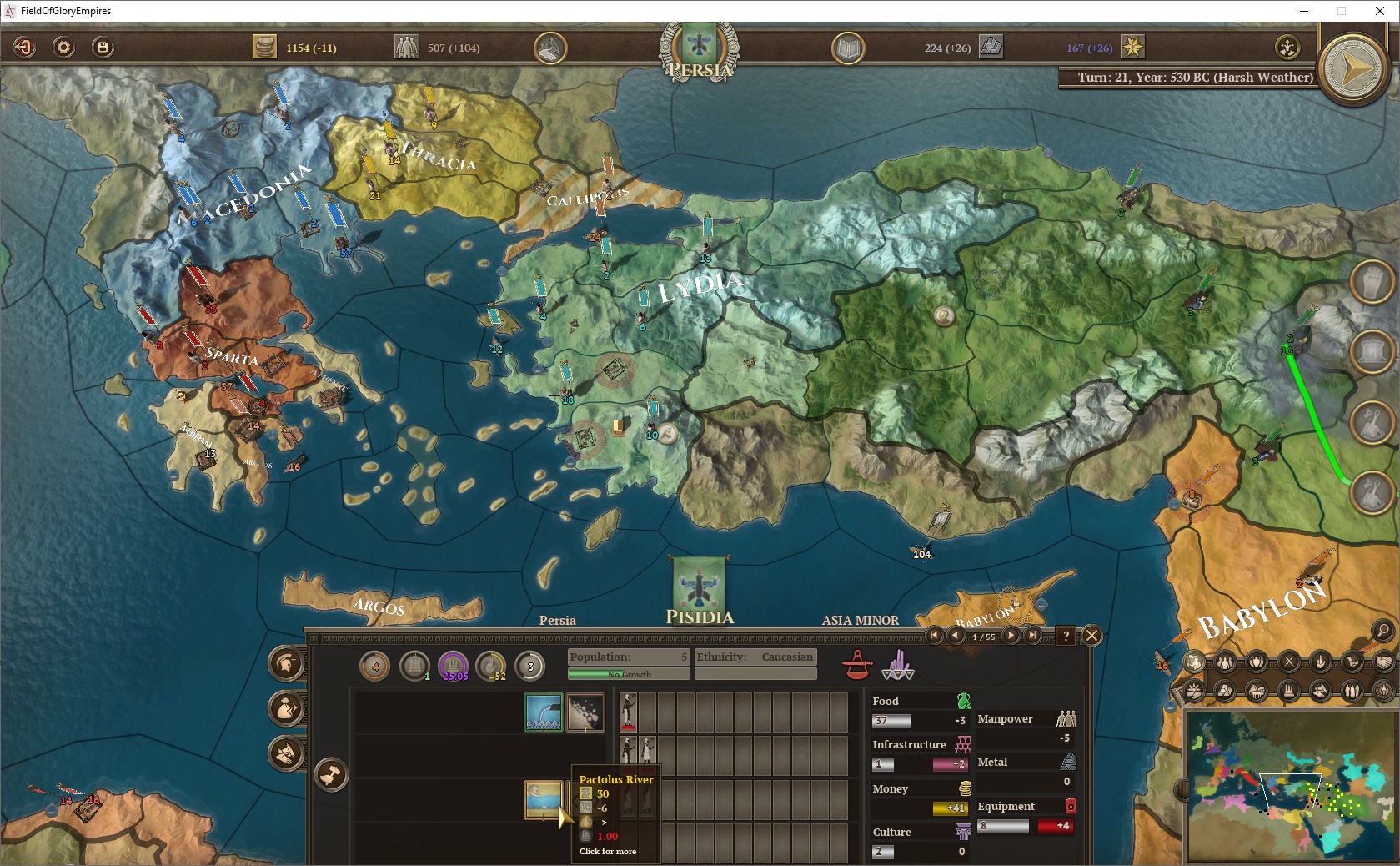
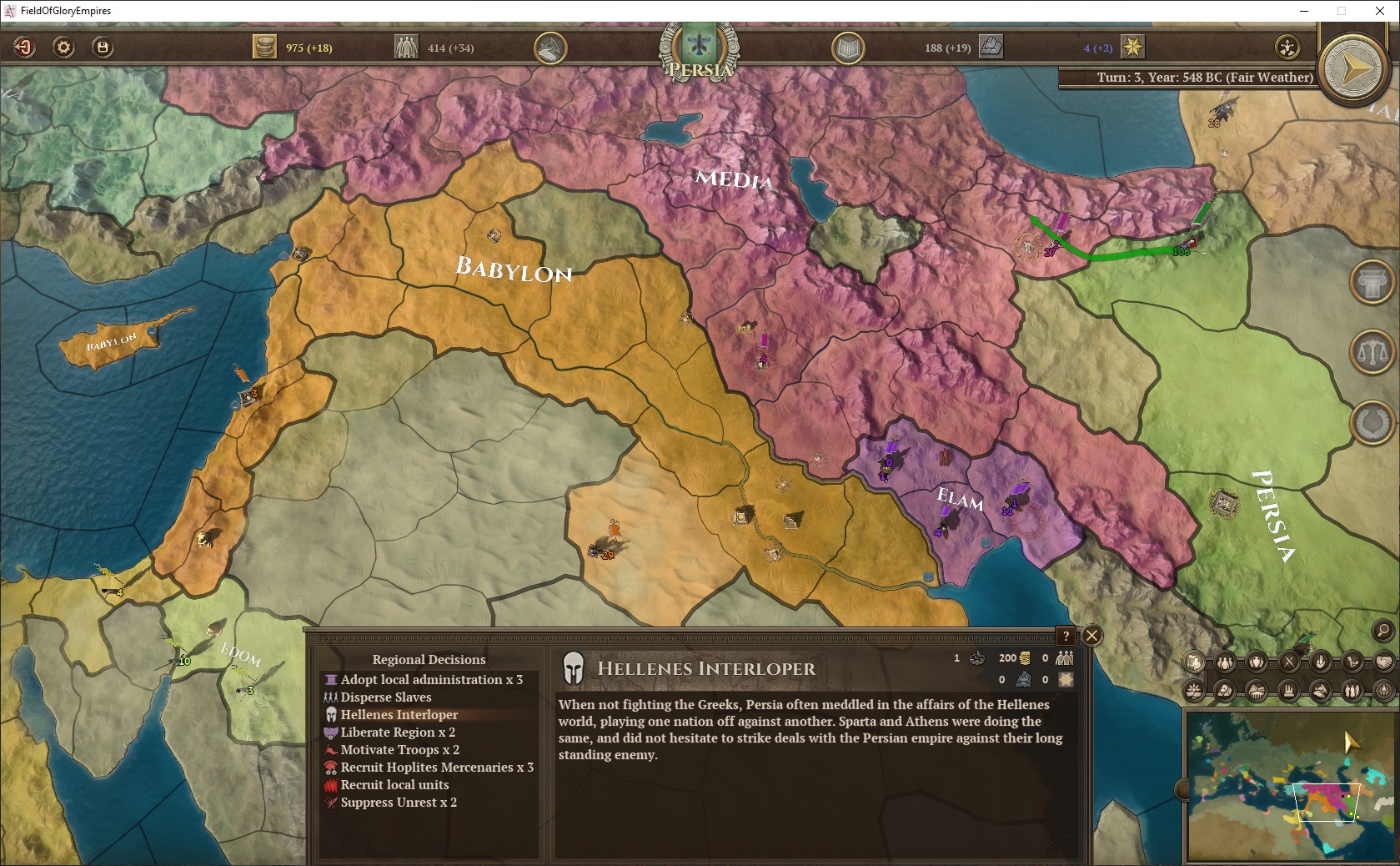
Conflict of Heroes Storms of Steel: Kursk 1943 (Third Edition) by Academy Games Kursk was one of the biggest...

For your Wargamer, Toy soldier collector, MiniFig collector, military history nut. Reviews, interviews, Model Making, AARs and books!
Conflict of Heroes Storms of Steel Kursk 1943 (Third Edition) by Academy Games
1 Mounted Board That Comes With 6 Various Shaped Pop-out Geomorphic Pieces
1 with 70 Soviet Units
1 with 15 German Units, 15 Soviet Units, and Hit Markers
1 with Miscellaneous counters
We have updated the maps and overlay artwork to be highly detailed and more beautiful than the original!
Storms of Steel 3rd Edition will feature a number of new firefights in addition to classics from the original!
All new counters in addition to new versions of the previous counters!
I changed the size of the boards to represent their actual size. I forgot to times by 2. I am still not used to this getting old stuff.
This is a blurb that one of the designers sent me that explains the difference in the Third Edition, better than I could.
"The biggest change in the 3rd ed is that a player takes an action with ANY of their fresh units. No more tracking APs. After the action, you test to see if the unit becomes spent by taking a stress test. That's it. Quick and simple
The stress test checks that Unit's cognitive suppression probability (its natural tendency not to move towards or interact in fire interchange. Units will often 'stop to assess the situation' before continuing on.
And this is what makes the 3rd ed so much different from the previous editions"
EUROPE DIVIDED from PHALANX I'm a great admirer of David Thompson's designs, particularly his two solo games that I'v...
For your Wargamer, Toy soldier collector, MiniFig collector, military history nut. Reviews, interviews, Model Making, AARs and books!
EUROPE DIVIDED
There are a few more card board counters and then the other wholly attractive components are the various decks of cards, which I shall explore when looking at game play.
The game takes place over two 10-turn Periods: Period 1 includes events from 1998-2008 and Period 2 from 2009-2019. Each player has a separate Headline Deck and separate sets of Action and Advantage Decks.
This is the first major aspect of the game's systems and is one that I relish. This battling for short term objectives provides ongoing tension. Sometimes the decisions are clear cut, as when preventing your opponent gaining 3 victory points [in game speak Prestige] is balanced against you gaining 1 VP. But more often than not the choices are more subtle and balanced.
I'd also add in that if, like me, you enjoy reading the cards, there's quite a bit of knowledge as well as geography to be picked up on route. Though that might have more to do with my poor geographical knowledge!
How do you go about achieving these goals? That takes us on to the main meat of the action, namely playing Action cards and sometime supplementing them by the play of an Advantage card. Each player starts with their own separate deck of Action cards, the play of which leads to the build up of influence in various regions of the map. The cards in your deck at start represent all the countries that you "control" and which can never fall under the influence of the other player, because your opponent can never place dice in them.
Before I move on, I think it's important to say a word or two about Build Army and Move Army. You can never have more than one Army in a region and the entry of an enemy Army into a region where you have an Army means mutual elimination. This concept of "Army" needs some explanation and sadly this is the one thing missing from the excellent rule book. There are no designer notes - a section in any game I look for eagerly to see the thinking behind concepts. The decision was a deliberate one to keep the rules to a slim booklet. However, there is a superb and very extensive Designer's Diary that I've included a link to at the end, if you share my interest in this aspect of a game. It also includes a cracking AAR playthrough too.
To return to the Action cards, we come to the next feature that wins my praise hands down. Each Player also has a set of twelve additional Action cards: one for each of the twelve Regions that the Players are vying to have most influence in. You gain your copy of the card when you have 5 or 6 pts of influence in a Region. Consequently, both players may come to hold a copy of the same Region's card. But each card contains different basic actions to choose from and a different Special Action too. Not only does this reflect the different political and historical perspectives of each side, but also continue the elements of asymmetry in two sides' play. Full marks for this design feature.
Just to stir the mix a little more, there is each Player's small deck of Advantage cards that as you can imagine throw in a few more distinctive traits of both sides.
The Great Crisis of Frederick The Great by Vuca Simulations Friedrich der Große was an anomaly for an 18th c...

For your Wargamer, Toy soldier collector, MiniFig collector, military history nut. Reviews, interviews, Model Making, AARs and books!
The Great Crisis of Frederick The Great by Vuca Simulations (formerly Furor Teutonicus)
One mounted map
198 large unit counters / 360 counters total
32 tactics cards
Four six-sided dice
Procedure of a phase: During their phase, each activated army follows this procedure:
1. All Alliances check their LoC network and mark isolation. (see 4.2).
2. Determines their Action Points (AP; see 6.).
3. Recovers and moves their forces (see 6.1 and 6.2).
4. Fights battles (see 6.3).
5. Removes recovery markers from units.
6. Marks control of spaces by placing or removing control markers (see 4.1).
7. Checks if he may draw tactics cards (see 7.4).
The game play is based mainly on Lines of Communications and Resource Points. Keeping your Lines of Communication open to your different forces is vital. If a force becomes isolated, they are penalized by the fact that only four units can move, compared to the usual eight. Their dice rolls for attack and defense are also halved. Resource Points can be either a city or a Resource Fort. Victory is determined a few different ways. If Prussia survives until the end of the game, that is a Prussian Victory. Prussia can also win after the death of Elizabeth of Russia. Each turn after her death a die is rolled. If a one is rolled then there is a peace settlement. If the Prussian Alliance controls sixteen or more resource Points, that is also a Prussian win. The Austrian Alliance wins if they are able to remove Frederick from the game, or Prussia has only eight resource Points or, nine if the Austrian alliance controls Berlin.
Battles and sieges take place off board with each side's troops lines up. The actual mechanics are very like a game with a separate 'Battle Board'. The low amount of units in most battles, and the absence of reserves etc. means that an actual battle board is not needed.
Vuca Simulations:
https://vucasims.com/
The Great Crisis of Frederick The Great:
https://vucasims.com/collections/available-games/products/the-great-crisis-of-frederick-ii
Rulebook Errata:
https://cdn.shopify.com/s/files/1/0295/6650/0908/files/08_04_2020_Frederick_Errata_V4_A4.pdf?v=1586361960
My review of 'Crossing the Line':
https://www.awargamersneedfulthings.co.uk/2020/01/crossing-line-aachen-1944-by-furor.html
Robert
Roguelike. Wargame. Two genres that you usually don't imagine mashing together. Perhaps it's time for that to change, if Armou...
For your Wargamer, Toy soldier collector, MiniFig collector, military history nut. Reviews, interviews, Model Making, AARs and books!
Armoured Commander II
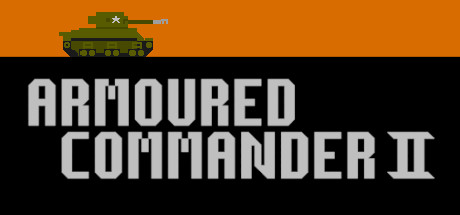
Roguelike. Wargame. Two genres that you usually don't imagine mashing together. Perhaps it's time for that to change, if Armoured Commander II is any indication of the possibilities. Now, of course, that fact that this game is a sequel indicates that the idea has been around for a bit, but I've only recently become aware of the series. I'm glad I found it, because as an avid fan of all stripes of roguelikes, I was excited to try something completely different.
Armoured Commander II (AC2), made by solo developer Gregory Adam Scott, does indeed bring some fresh ideas to the table, and does some cool things with a very simple interface. As you'll notice, AC2 is not a visually impressive game, though the blocky tank designs are charming in their own way. What is impressive is the UI design and the fact that anyone could pick up this game and be playing in a matter of minutes, with no need to even look at the manual. The action follows a distinct series of phases, and all available actions in each phase are either explained on screen or self-explanatory.
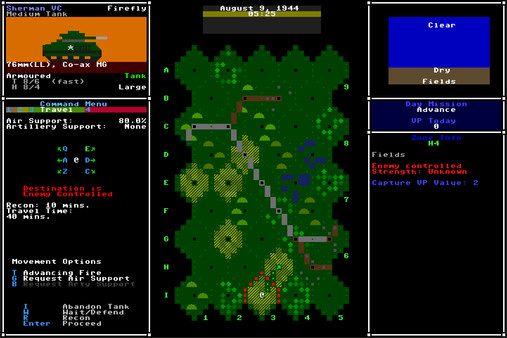
The game begins by letting you choose between a variety of campaigns. You can start at the beginning with the invasion of Poland, or jump to the late war rush across Europe by the Allies, and many stretches in between. Even more campaigns are planned for the future, including North Africa, the Eastern Front, and perhaps even the Pacific one day. Once you pick a campaign, you are given a choice of several tank models. All the mainstays are here, along with some rare models. I enjoyed the historical tidbits included about each model.
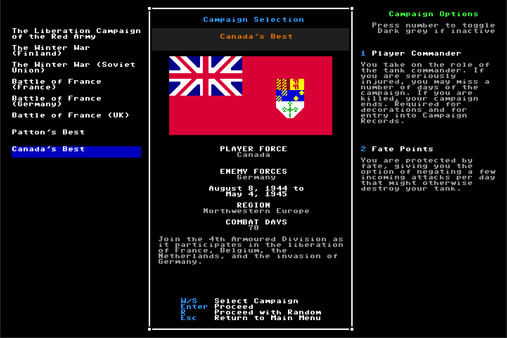
Before long, you will find yourself in a tactical battle against one or more enemies. This is where the meat of the game begins. Now the hex map zooms in, putting your tank in the center and foes all around. At the beginning of each round of combat you will decide what each member of your crew is doing. Naturally, each member has different options available, though all can "spot" for enemy contacts. The driver can prepare to drive, the gunner can prepare to gun, but the commander can only lend his direction to one of them at a time. Depending on what tank you are in, there will be other assistant crewman who can help out by reloading the main cannon, or manning a machine gun, or doing other activities. In the event on of your boys takes a hit (never a pretty sight inside a tank, best not to think about it), you can have one of these crewmen slide over into their place and carry on. All of the selections you make here at the beginning of the turn will dictate what your options are for the rest of the turn, and how likely you are to succeed in those actions.
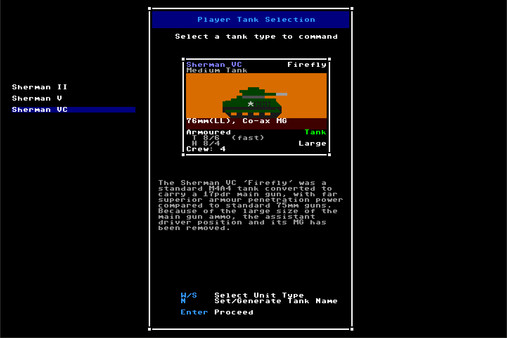
Combat is deceptively simple in AC2. When you fire a cannon or machine gun, you'll get a percentage chance to hit. This chance depends on a number of factors, such as the size and type of target, whether they are in cover, whether your tank just moved, and whether the commander is directing the fire, among other things. At the end of the firing phase, there is another roll of the dice to see if the target is damaged or destroyed. Each round the enemy is doing roughly the same thing back at you. This sounds simple enough, but there are a lot of neat little twists built in. You can direct your driver to seek a hull down position. He might succeed or not, maybe you should have had the commander help him out? Alternatively, you can have the driver attempt to overrun the position of an enemy AT gun or rifle squad. Do you roll into battle un-buttoned, able to survey the entire battlefield, or button up to keep safe but leave yourself almost blind? The game has many little trade offs like this that keep each turn interesting.
If you survive and go on to the next battle, your crew will begin to level up and gain new skills. Letting you customize your experience in each campaign and add some RPG flavor to the game. The men each have their own stats like morale and grit that change over time. Each crewman also has a name and even a bit of history, and it will sting to lose one or see him badly wounded after many fights together. I didn't get deep enough into any one campaign to see a lot of this system just yet, but I love that it's a part of the game.
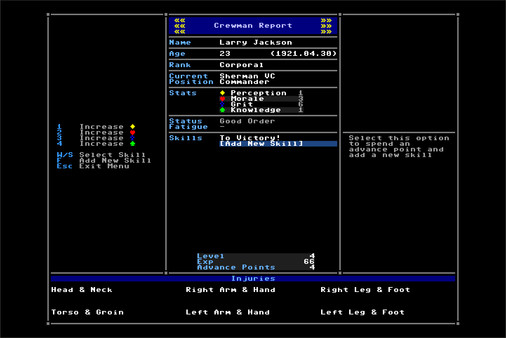
I wasn't sure whether or not I would like AC2 when I first fired it up, but after my first session I could see the appeal, and after my second session I was hooked. Like other roguelikes, AC2 makes you want to see what's around the next corner, and then the next. Maybe you'll find a juicy target, or maybe a nasty surprise. Your first time out might be a dismal failure, but each subsequent run will be made with the experience you've gained. Different campaigns come with different varieties of terrain, enemy forces, and tanks to command. There is a lot of variety here already, and the one-man developer promises to keep adding on over time. The game has technically just begun early access, but you can buy it right now, and expect a full experience already, and a steady stream of updates to come. In the past week since release there have been near daily patches to fix bugs and make small improvements.
At a very modest $8, this game is certainly worth a look for anyone who fancies a new roguelike, a fresh take on WW2 combat, or all of the above. Even if you aren't a fan of the Dwarf Fortress level graphics, the solid UI and compelling gameplay will suck you in before you know it. Like some kind of grognard Neo, you won't be seeing punctuation marks and abstract shapes, you'll be seeing a battlefield alive with dug-in AT guns and deadly panzers.
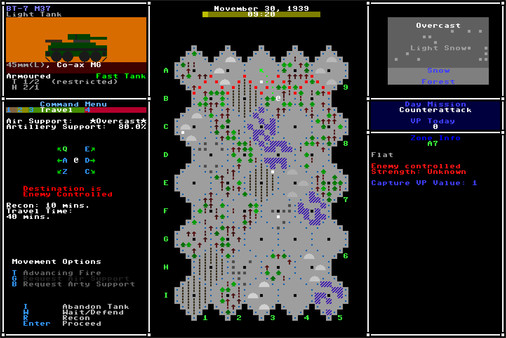
Since this is just the initial early access release, I plan to follow the game for a while and post a full review once it is deemed complete by the developer.
Armoured Commander II can be purchased on Steam.
Official Blog
- Joe Beard
Kernstown 1st Kernstown (March 23,1862) 2nd Kernstown (July 24,1864) by Revolution Games These two batt...

For your Wargamer, Toy soldier collector, MiniFig collector, military history nut. Reviews, interviews, Model Making, AARs and books!
Kernstown: 1st Kernstown (March 23,1862) 2nd Kernstown (July 24,1864) by Revolurion Games
- 2 x 5/8" counter-sheets (352 counters)
- Rulebooklet
- 5 charts/playeraids
- Box or ziploc bag
- 2 dice (Boxed version only)
2. ARTILLERY PHASE
a. Union Artillery Step (move or fire)
b. Confederate Artillery Step (move or fire)
c. Both sides alternate “a” and “b” above until done
d. Artillery Rally/Rebuild Step
3. CHIT DRAW PHASE
a. Held Event Chit Step (play any held events)
b. Draw Chit Step
If Event chit, owning player keeps it or plays it, draw new chit If Wild chit, resolve immediately, draw new chit
If CIC chit, owning player selects brigade and proceeds to Phase 4 or holds the chit
If Division Activation chit, proceed to Phase 4
4. BRIGADE ACTIVATION PHASE
a. Orders Step
b. Fire Combat Step
c. Movement Step
d. Close Combat Step
e. Rally Step
f. If any chits remain in the cup, return to Phase 3.
g. If no chits remain in the cup, go to Phase 5
5. END TURN PHASE
a. Final Held Event Chit Step
b. Victory Point Awards Step
c. Flip over all “Activated” brigade markers to their “Available” side
d. Broken Track Adjustment step
e. Each player gathers all his Event chits together and then advances the Game Turn marker
The game comes with six scenarios, with two being 'what-ifs' of each battle. The scenarios are:
The Stone Wall - 1st Kernstown
The Historical Battle - 1st Kernstown
Jackson is aware - 1st Kernstown
Breckenridge Attacks - 2nd Kernstown
Historic 2nd Kernstown
'What If' - 2nd Kernstown
The simplest way to do this review would be just to say 'Hey, its the Blind Sword System, with a Rick Barber map'! That should be enough for people to get out their credit cards, but we will continue with the regularly scheduled review for those of you still on the fence. The 'Blind Sword System' is based on a chit-pull mechanic, but then it goes much farther. The chits that can be pulled are these:
Some of the other rules that enhance the game are:
Canister fire for Artillery
Artillery can fire over friendly troops
Close Combat
Cavalry charging
Mounting and dismounting Cavalry
Cohesion Tests
Skedaddle Test
Revolution Games:
www.revolutiongames.us/
Konigsberg:
https://www.awargamersneedfulthings.co.uk/2018/06/konigsberg-by-revolution-games.html
Longstreet Attacks:
https://www.awargamersneedfulthings.co.uk/2018/08/longstreet-attacks-by-revolution-games.html



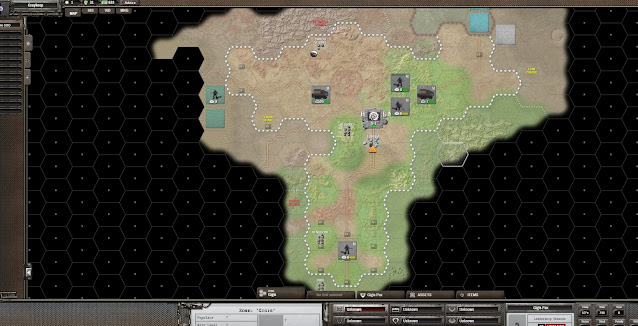












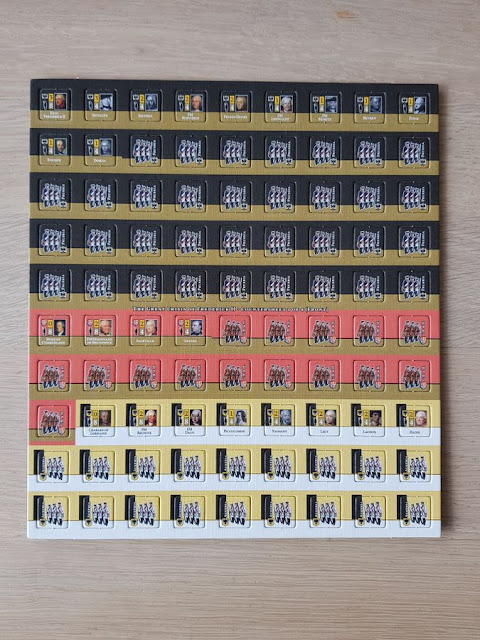

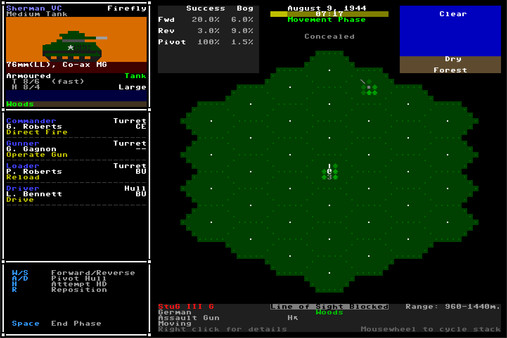








Follow Us